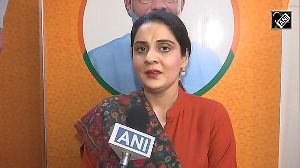The recent hardening of interest rates has opened up a lot of opportunities for those looking to invest in debt instruments. This is primarily because of the fact that returns on equities have not been stable.
No wonder, banks as well as mutual funds have been aggressively advertising to entice the potential investor with their offers of higher returns. Here is a look at different avenues in debt instruments and how they measure up against each other:
Blockbuster show - Fixed Maturity Plans or FMPs, as they are better known, are the latest hit in the debt market. They have really caught investors' fancy of late as the returns have been high returns and added tax benefits.
Also, various schemes of different maturities are being launched regularly to suit investors' needs. Let us see how these schemes work. Essentially, FMPs are debt funds with a fixed corpus and maturity period.
However, a point to note is that FMPs do not guarantee returns but only give indicative yields. Once the corpus has been collected, the fund manager buys debt papers that matches the maturity period of fund. While most of funds are invested in AAA rated papers, a small portion may be invested in AA rated papers as they earn better.
However, investors have the choice of dividend or growth options. In case of the dividend option, the interest is paid after deduction of dividend distribution tax at 12.5 per cent plus surcharge plus cess.
For institutions, the rate of dividend distribution tax is 20 per cent plus surcharge plus education cess. In case of the growth option, the income is treated as long-term capital gains. Thus, one can claim indexation benefits.
These tax benefits, along with attractive yields of around 10 per cent per annum have made FMPs very popular. Moreover, there are also monthly/quarterly interval products. In the interval option, the investment rolls over automatically at a fresh yield, at the end of each period.
Falling Short - Debt income funds are similar to FMPs in all respects, save the fact that they do not have any fixed maturity. They are mostly open-ended funds, with no or very low exit loads. Their performance has not been very inspiring of late.
In fact, even short-term income funds have outperformed longer-term income funds. This is because fund managers of income funds buy debt instruments of varying maturities.
In a rising interest rate regime, the market price of bonds fall, as their yields rise, especially those of longer maturities, making longer term debt portfolios suffer a mark to market loss. In the past year short-term income funds have returned 6.68 per cent while long-term debt funds have returned only 5.32 per cent. This avenue of investment does not look very attractive in a rising interest rate scenario.
Sinking Feeling - Floating rate debt funds are linked to floating rate of return, which change with bond yields and interest rates fluctuations. This means that ideally, floating rate funds should not incur a mark to market loss on their debt portfolio in a rising interest rate scenario.
However, returns of these funds have been quite low, with short-term funds returning more at 7.05 per cent than longer-term funds at 6.88 per cent. Though these funds are a better choice over debt income funds in the present scenario, their returns do not make them a preferred vehicle of investment for longer-term investments.
Snail Mail - Post Office saving schemes have, historically, been very popular with investors. Public Provident Fund, National Savings Certificates and the Post Office Monthly Income Scheme have been the preferred form of investment, for many.
The PPF scheme, which is available through nationalised banks as well, is a 15-year scheme where the investor gets a tax-free interest of 8 per cent a year. However, the maximum limit of investment is Rs 70,000 a year for an investor. NSC is a five-year scheme where the investor gets the interest at 8 per cent a year.
POMIS earns 8.64 per cent annualised returns, Besides, there was a 10 per cent bonus on principal on maturity after six years, which the government has done away with for fresh investments. This has made this scheme less attractive, though its yield is still higher than that of NSC.
Bank on them - Bank fixed deposits are becoming very popular of late, especially since banks are offering returns of over 10 per cent per annum. Also, investment in five-year bank deposits has been made eligible for tax benefits under section 80C, making them more attractive.
Gilt Edge - Government bonds or RBI Bonds as they are popularly known, have been very popular in the past, especially with high net worth individuals. They are six-year lock-in bonds with an option of half yearly interest payment or cumulative payout on maturity. But due to the reduction in interest rates to 8 per cent, along with the withdrawal of tax-free option, have made bonds less attractive.
Going through the options available, RBI bonds and PPF are the best options for an investor seeking highest capital safety. Bank FDs also measure up quite well, as they provide high safety of capital and give tax breaks in certain cases. For investors with uncertain and very short-term horizons, short- term floating debt funds seem suitable. However, for investors with longer time horizons seeking higher returns with lower taxes, a mix of PPF and FMPs is the best option.
The writer is a financial planner and director of Touchstone Wealth Planners






 © 2025
© 2025